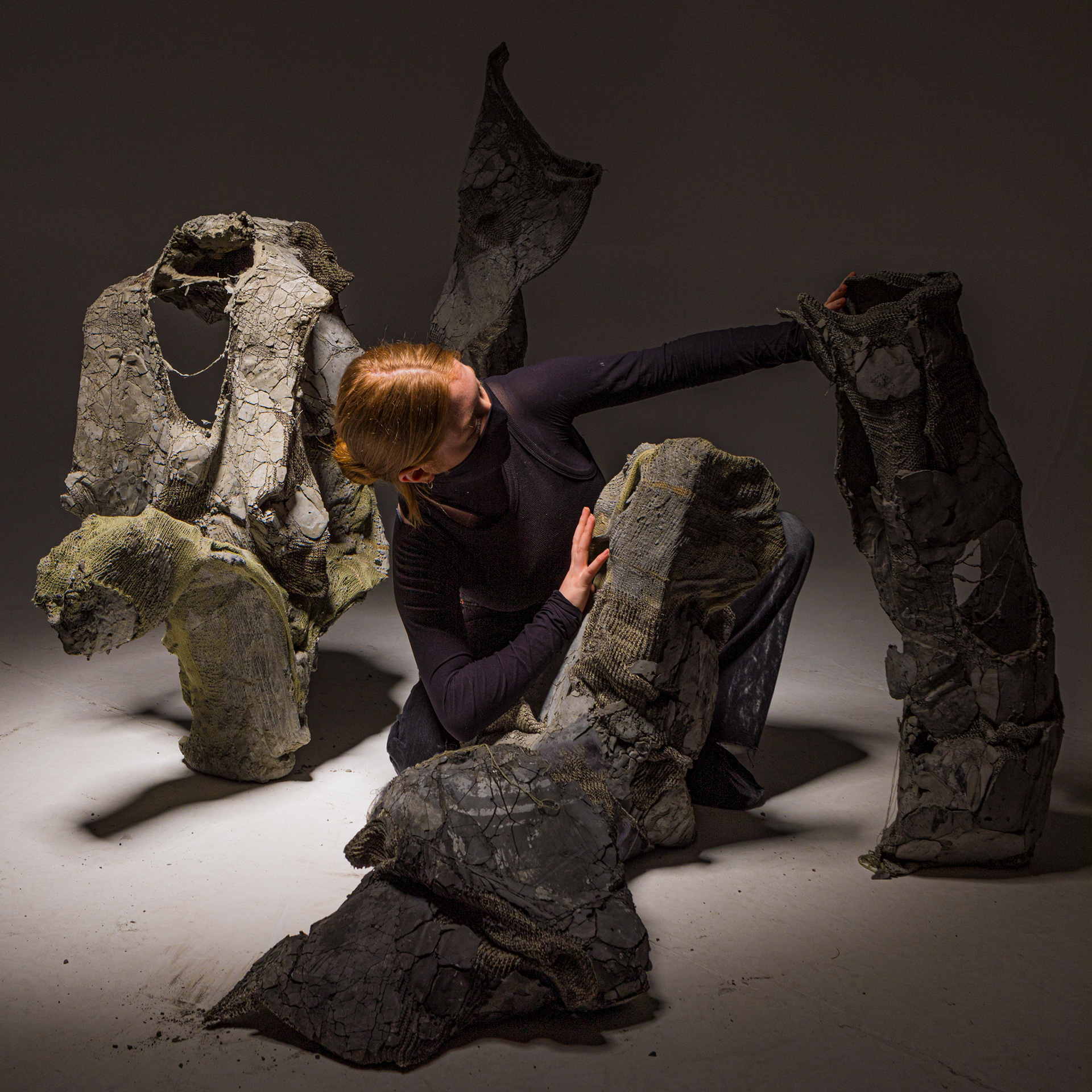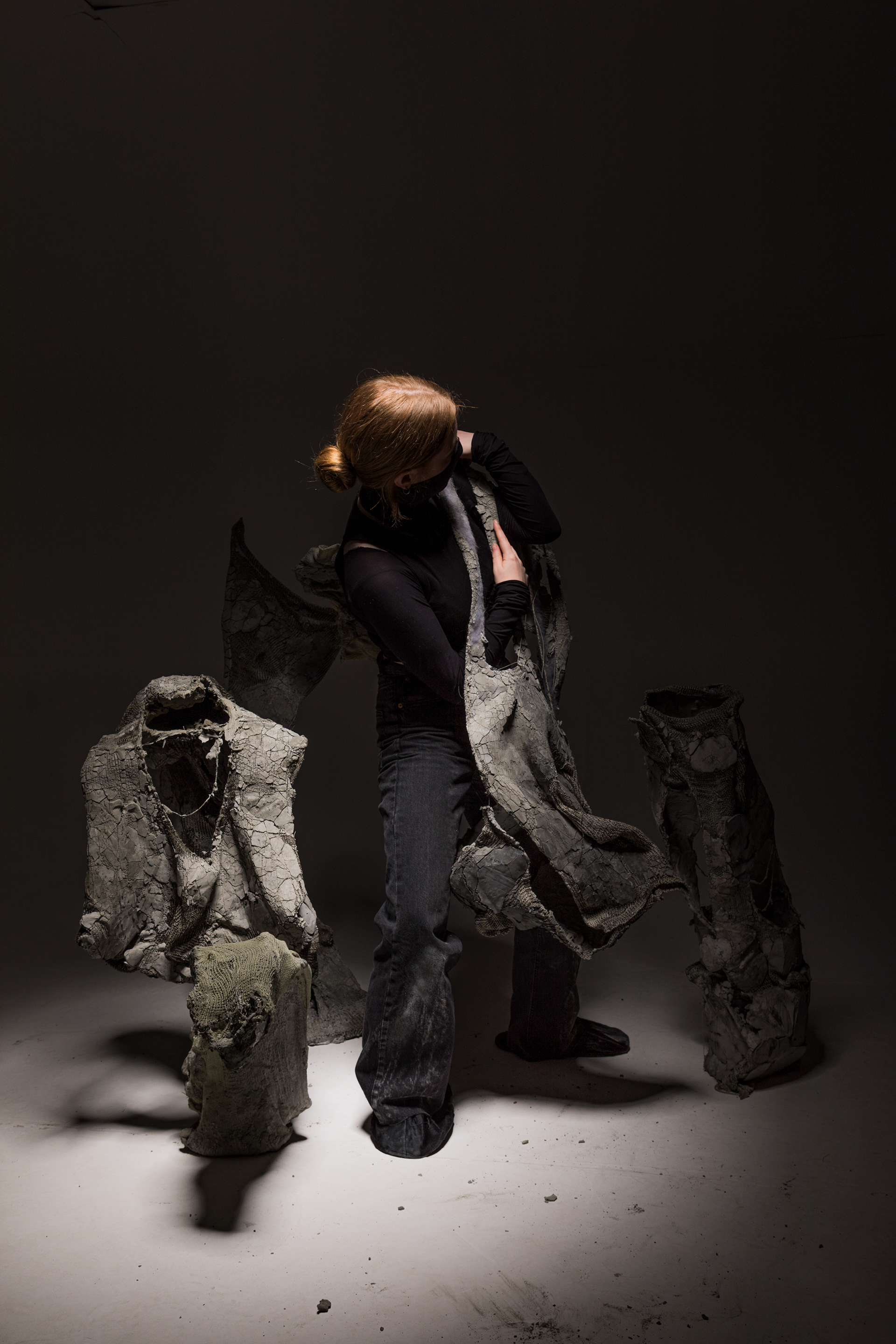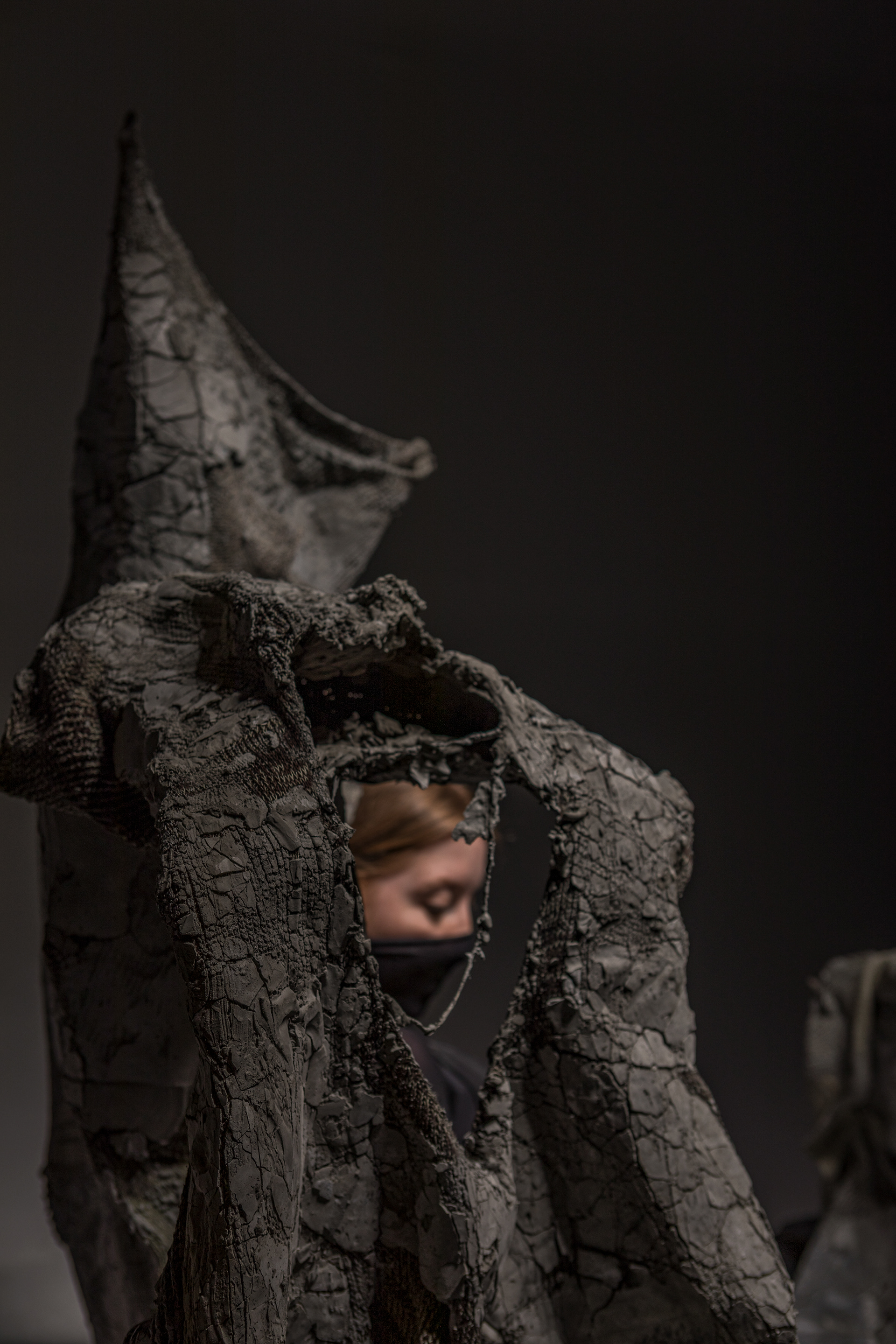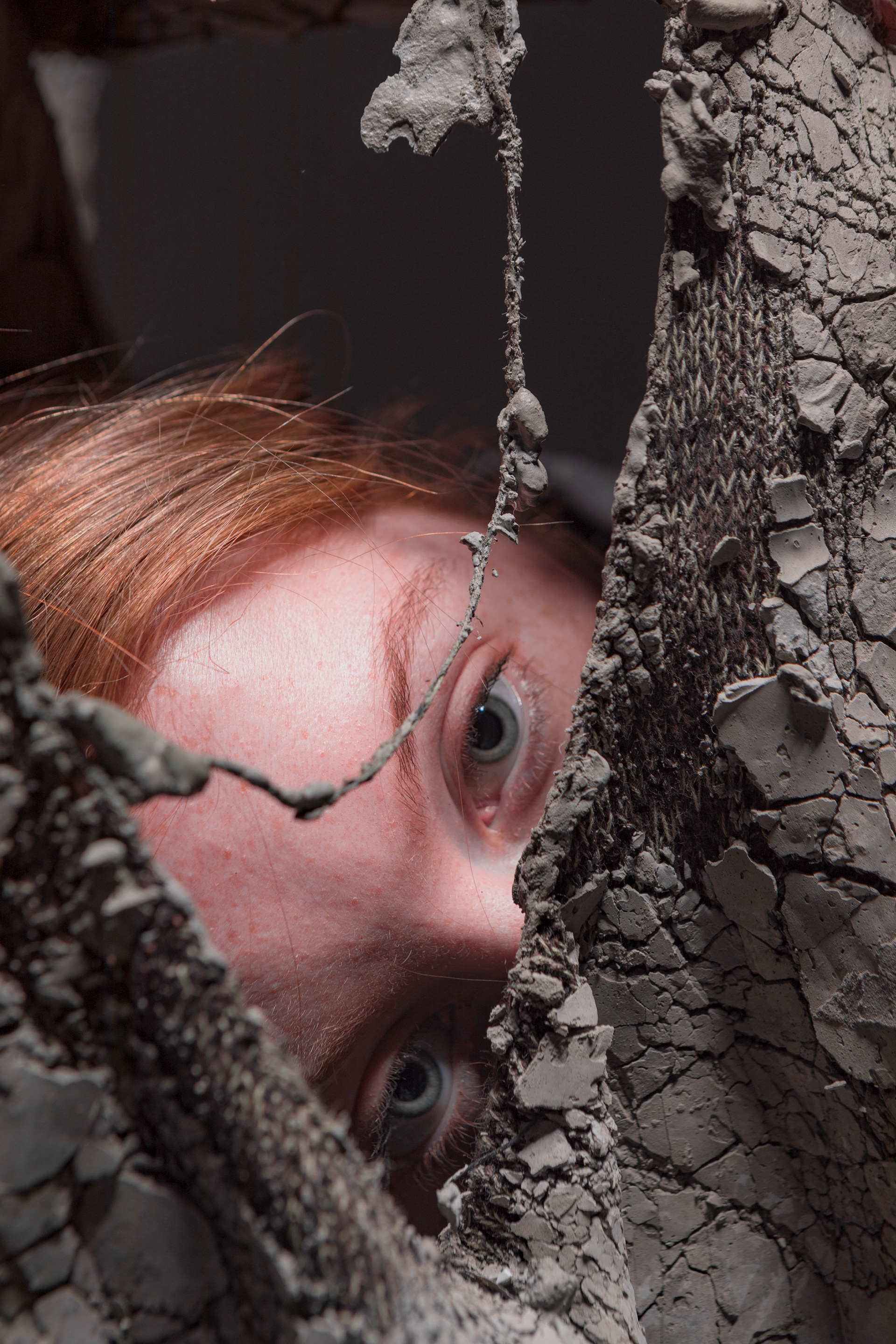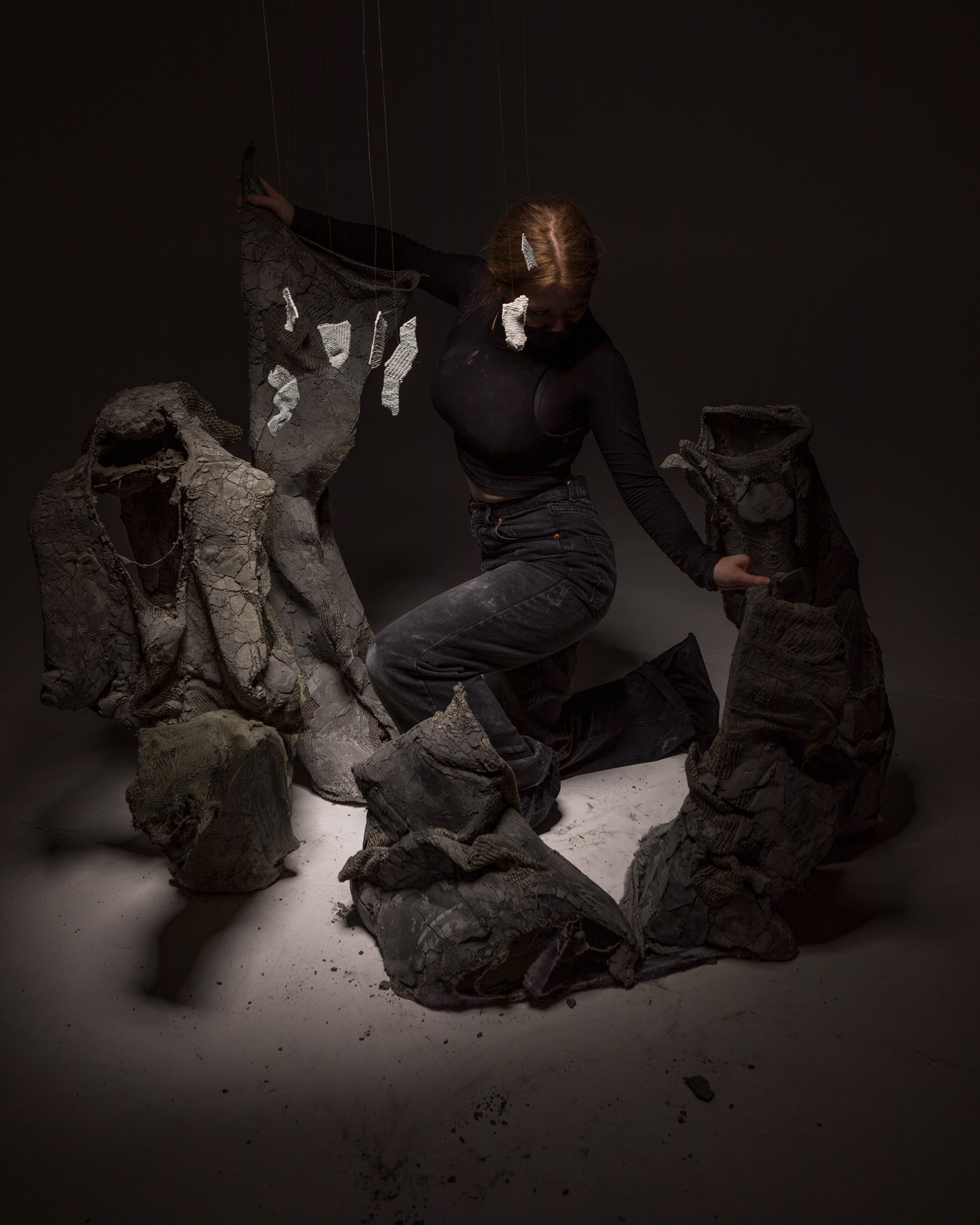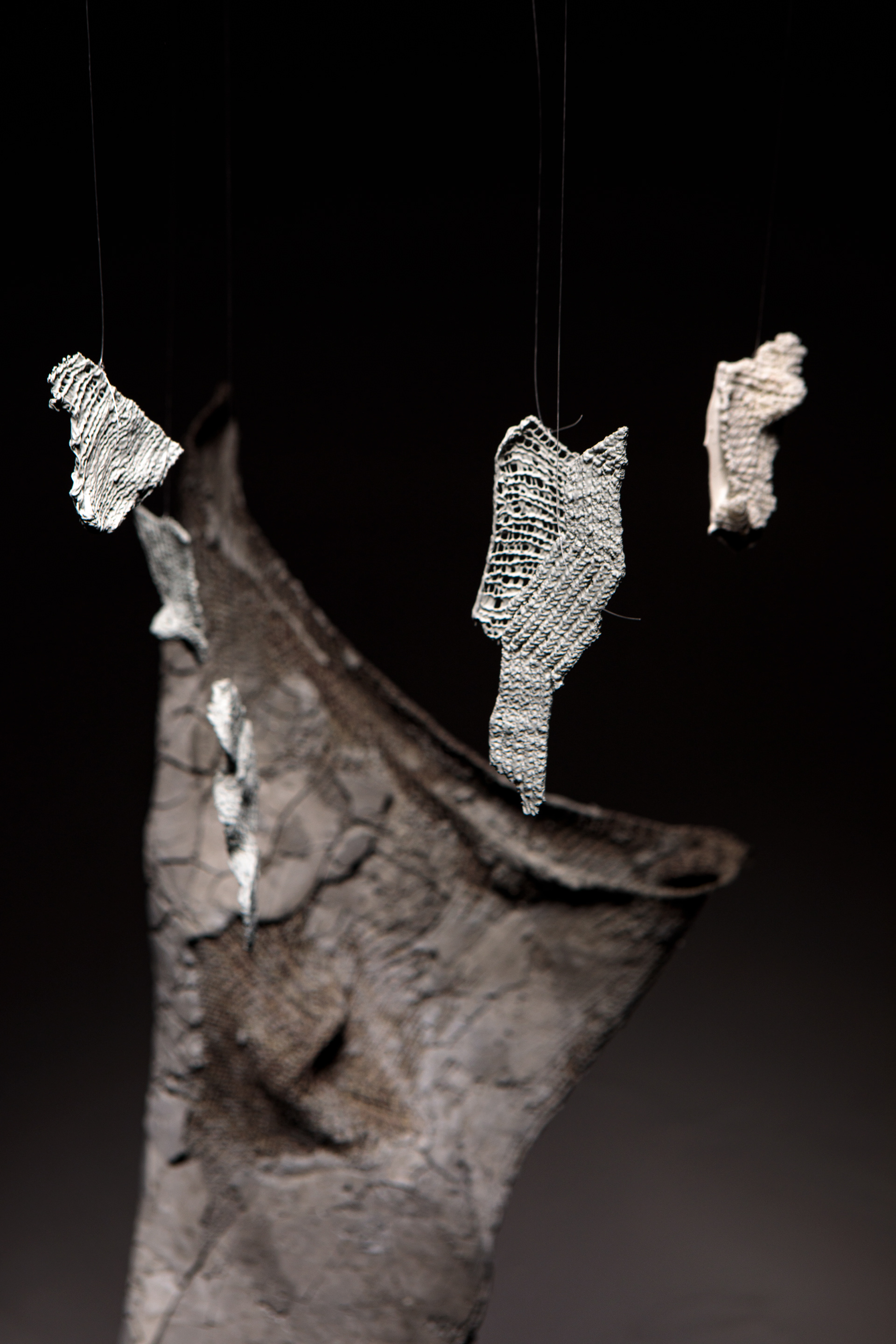anechoic cities
hostile architecture, silencing shared spaces in our cities
For my honours project I explored the concept of hostile architecture. This led me to develop a collection of textiles which highlight the brutal and dehumanising nature of hostile or anti-homeless architecture.
My research revealed the shocking lengths city developers go to making our city centres uncomfortable places. Initially, I had thought this was directed only at people experiencing homelessness, with architecture such as rails on benches to prevent individuals lying down or spikes in places where people may want to rest. However, I quickly realised that hostile architecture affects a much wider range of people, targeting ‘outsiders’, young people and skateboarders. The effect of this intentional hostile architecture is to increase a perception of rejection, hostility, exclusion and to diminish diversity and sense of community.
spikes
The strongest imagery in the features of hostile architecture was spikes, which I began investigating through patterns and textures of knitted textiles.
Once I perfected a peaking spike technique, I explored how I could create more texture by taking inspiration from the rough concrete surfaces, focusing on their imperfections and exposing them.
After exploring how to replicate concrete textures, I experimented moulding using cement into my knit samples. This worked really well as the knits came through breaking the smooth surface of the concrete, creating crack and imperfections which exposed the imperfectness of hostile architecture.
After exploring how to replicate concrete textures, I experimented moulding using cement into my knit samples. This worked really well as the knits came through breaking the smooth surface of the concrete, creating crack and imperfections which exposed the imperfectness of hostile architecture.
concrete
I discovered that I the more you compress concrete, the darker and shiny it dries which enabled me to draw many more tones out of the material.
I tried using moulds to create bigger shapes, beginning with a square and then experimenting further.
Polishing the cement time was consuming but very satisfying in the smoother finish it drew out.
The samples made in moulds were very impactful but clunky and hard to interact with, so I experimented with ceramics and thinner layers of cement to make more malleable pieces.
I draped the concrete coated samples so that when dried they were self-supporting. This was reminiscent of columns which were powerful yet also warped. In a tutorial we discussed the symbolism of columns representing power and authority, so I began to perceived warped and decaying columns as symbols of shifting power and change. I felt this was a really interesting breakthrough in the creative process.
I organised a photoshoot to capture the details of the textiles and see how they looked together as a collection. The shoot was successful however made the pieces appear clinical, so I wondered if using bodies with movement and lighting could enhance the work.
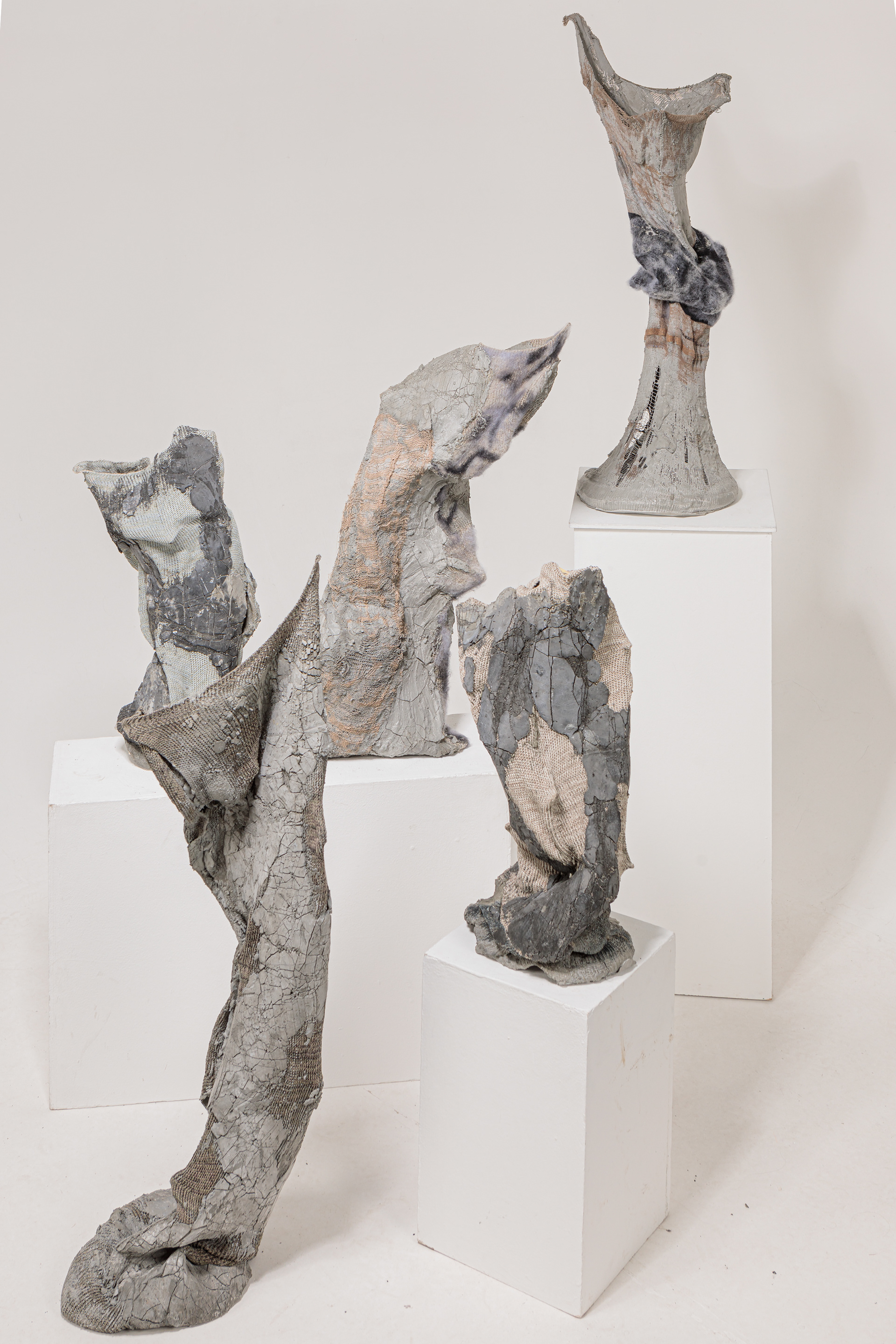
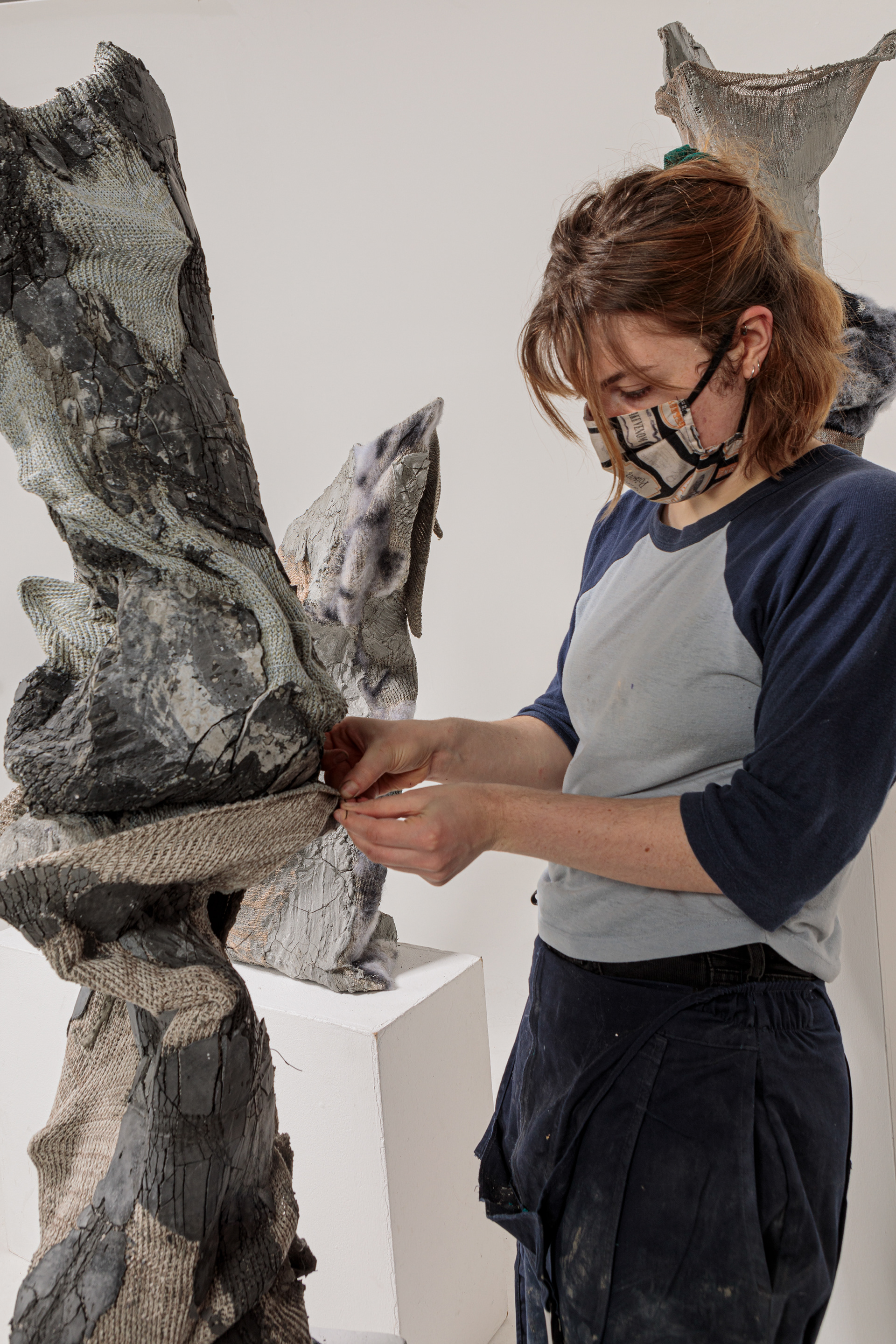
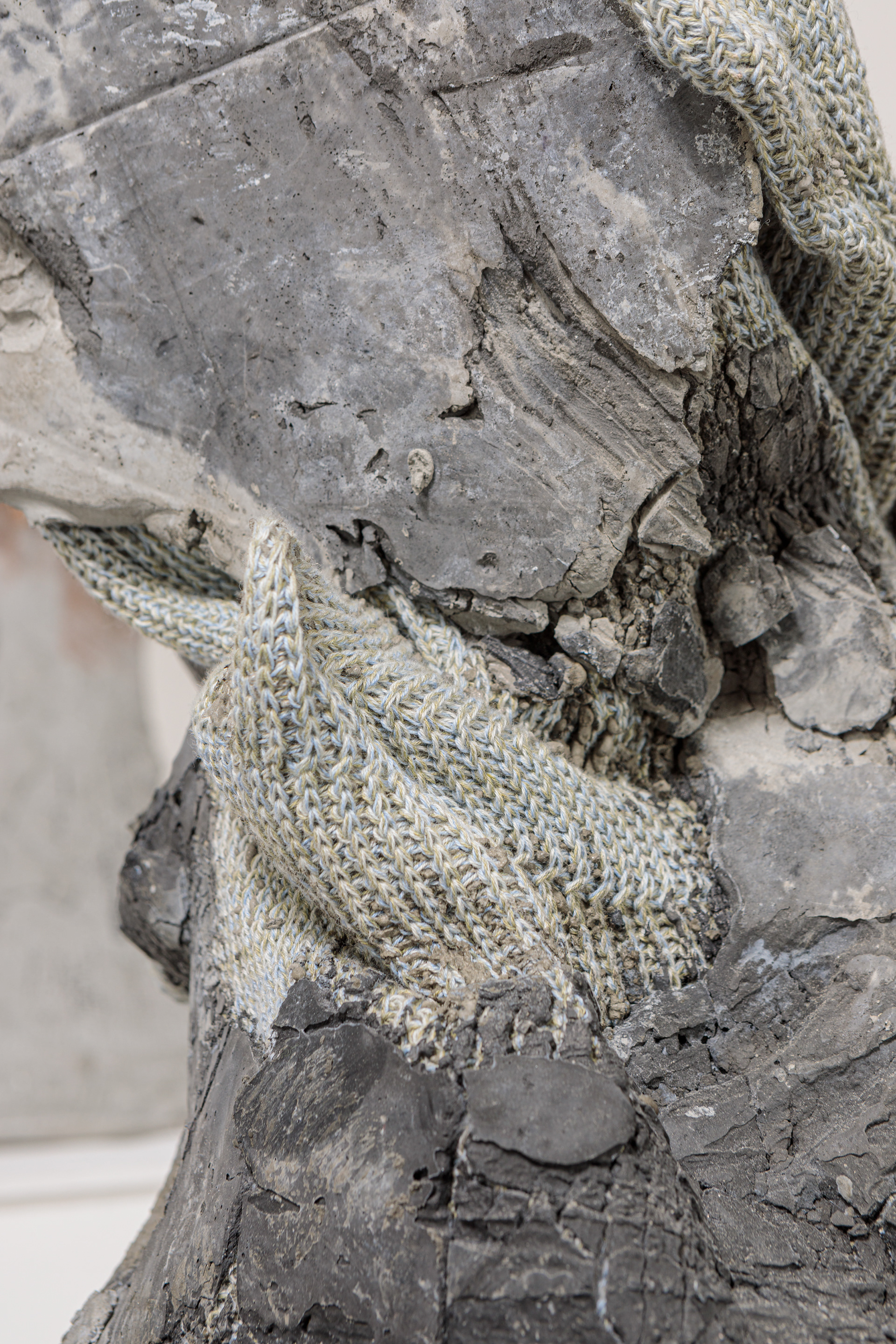

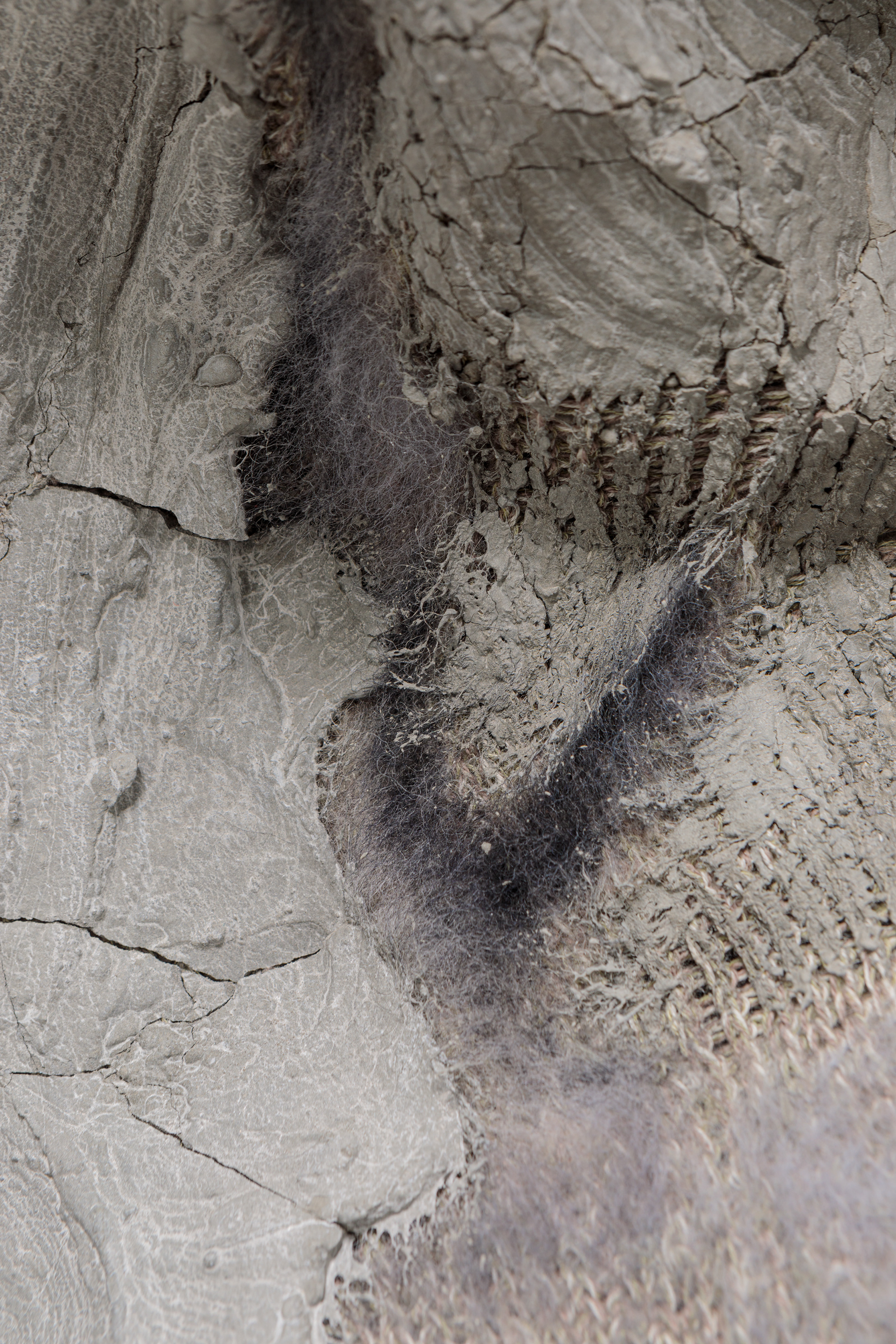
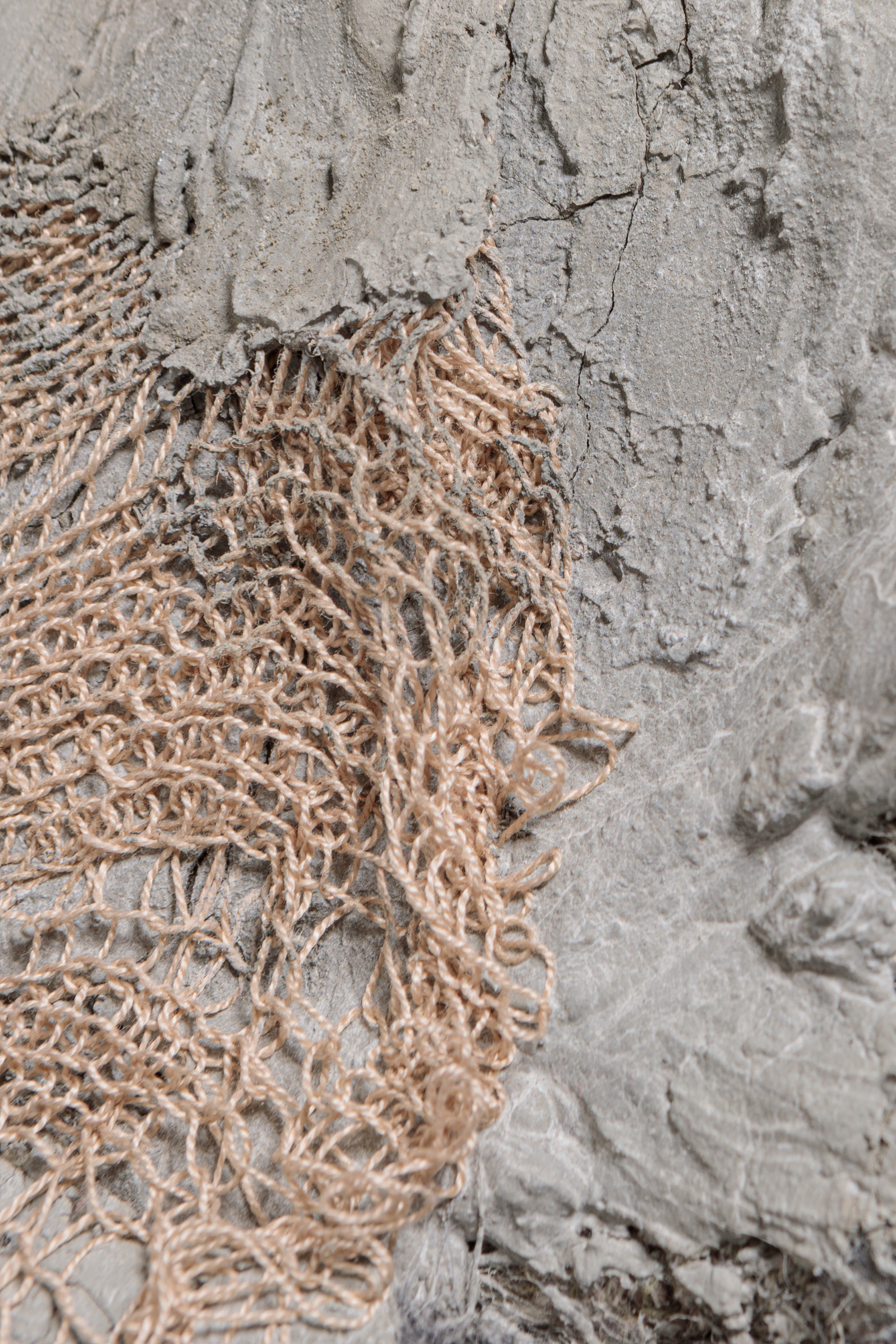
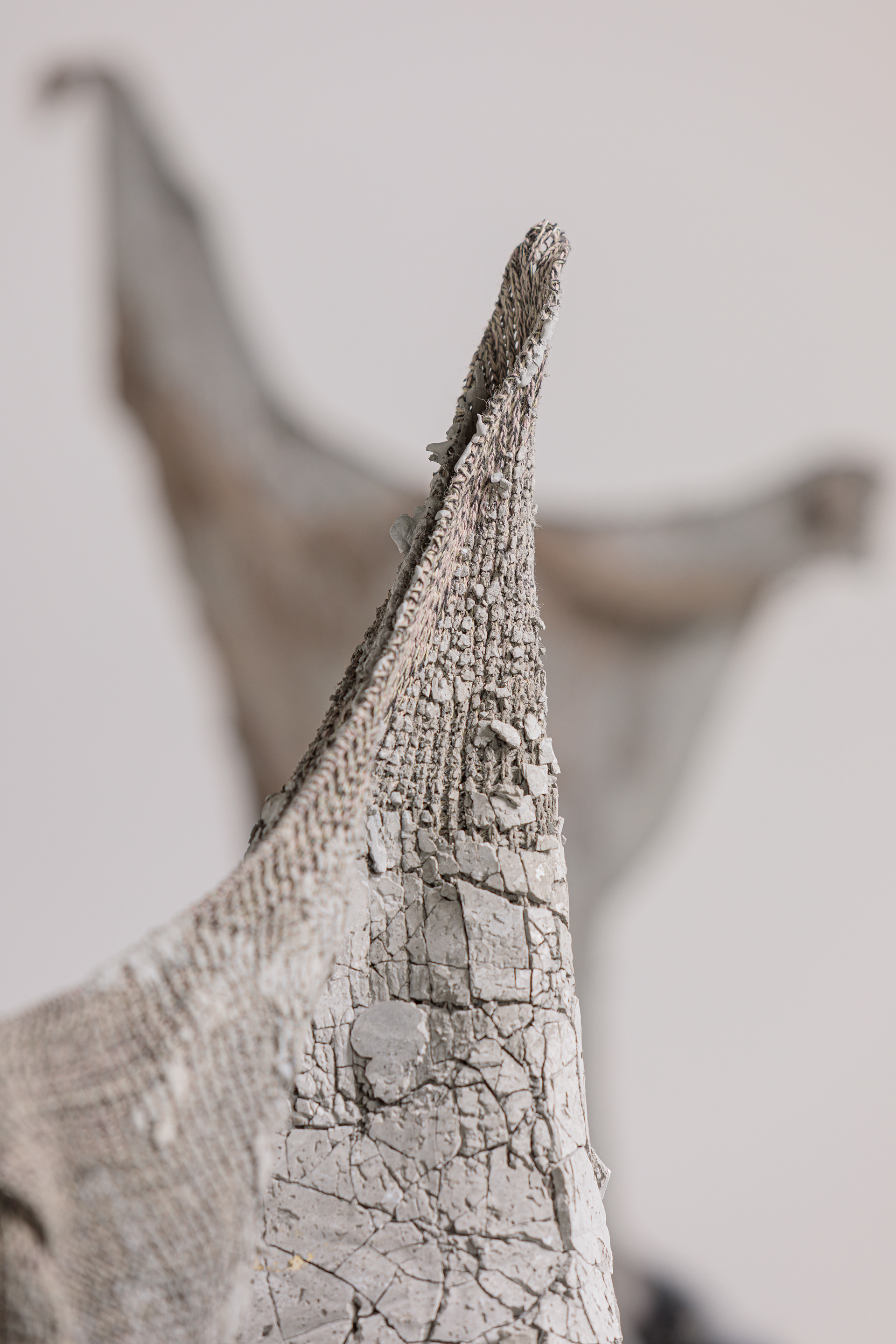
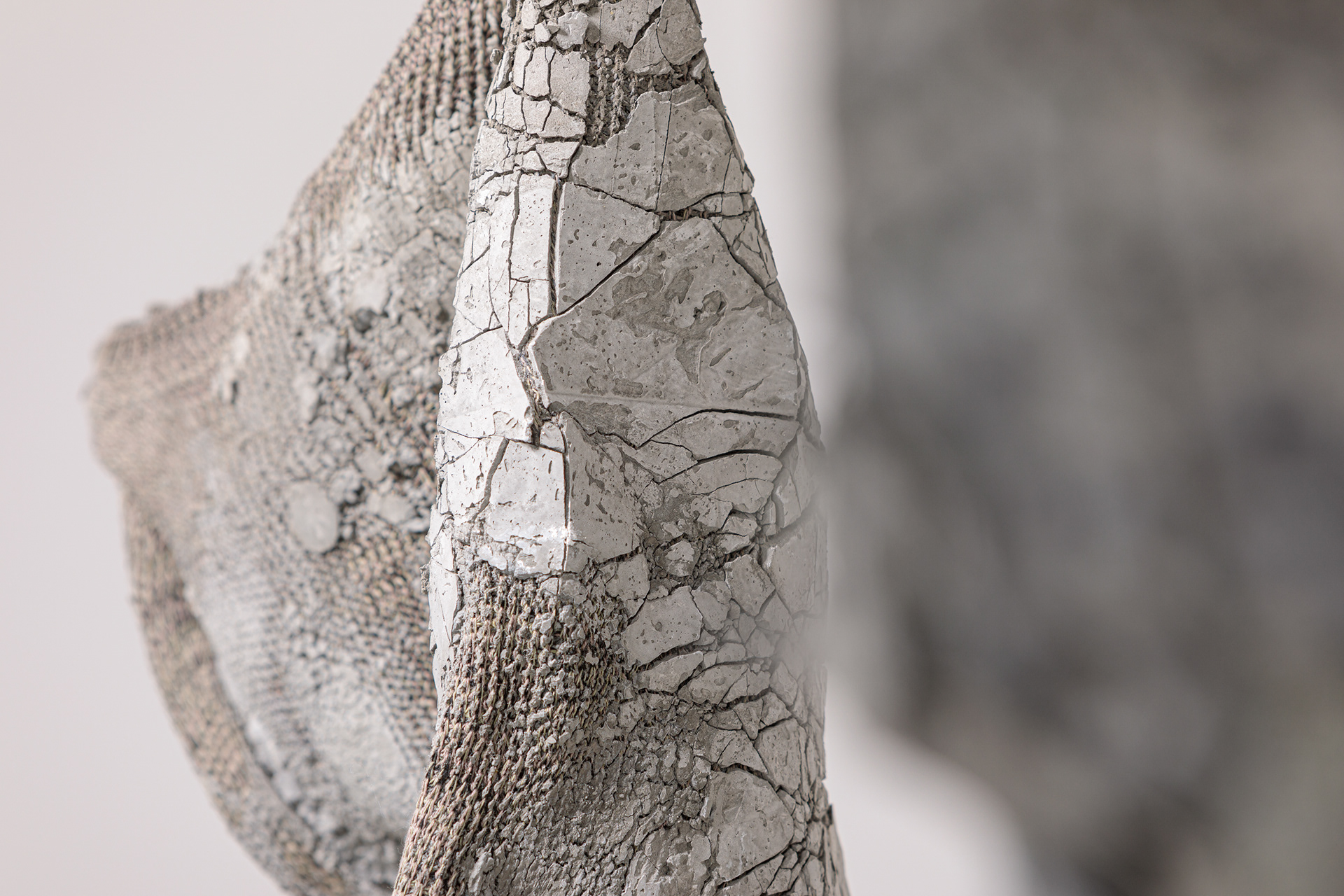
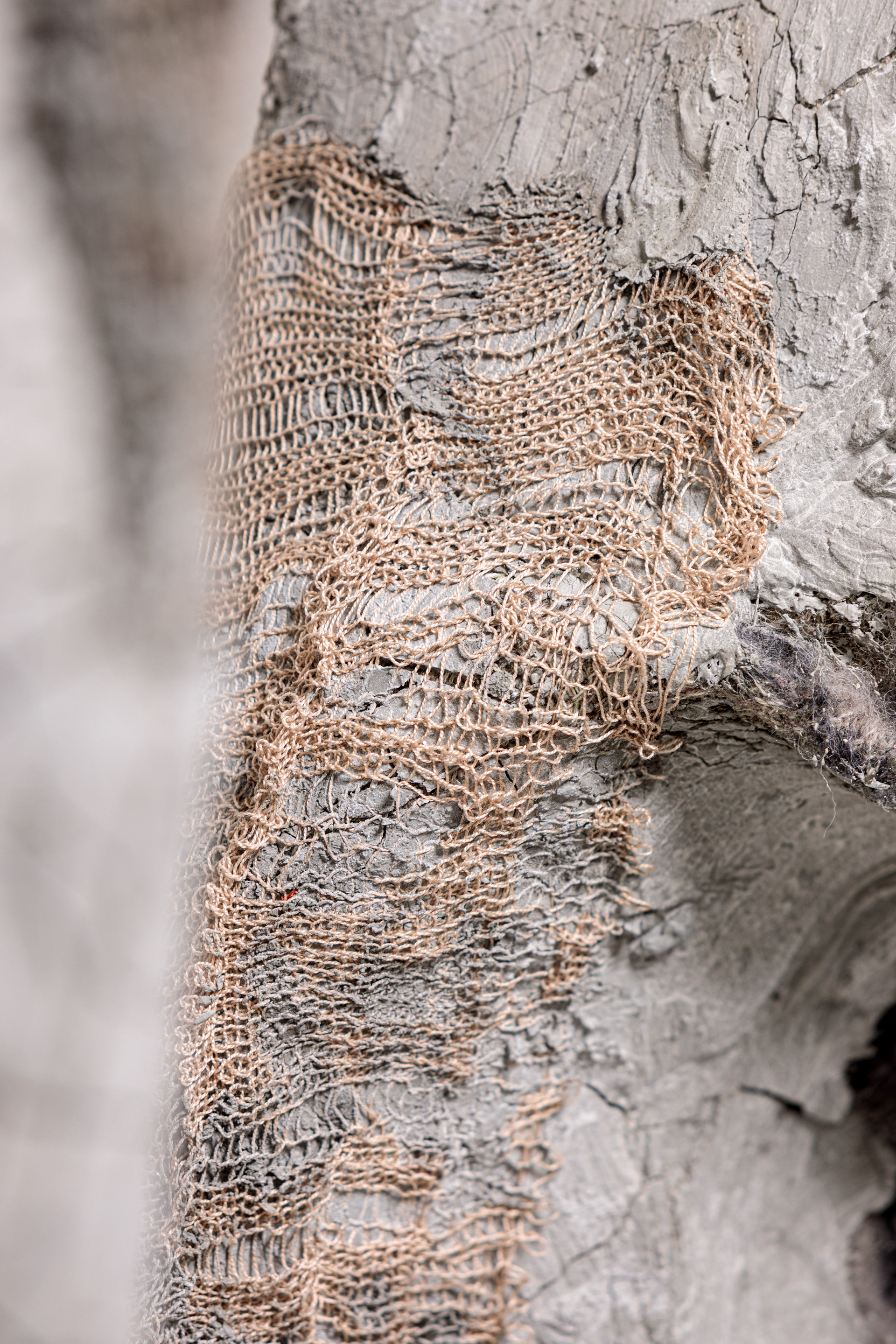
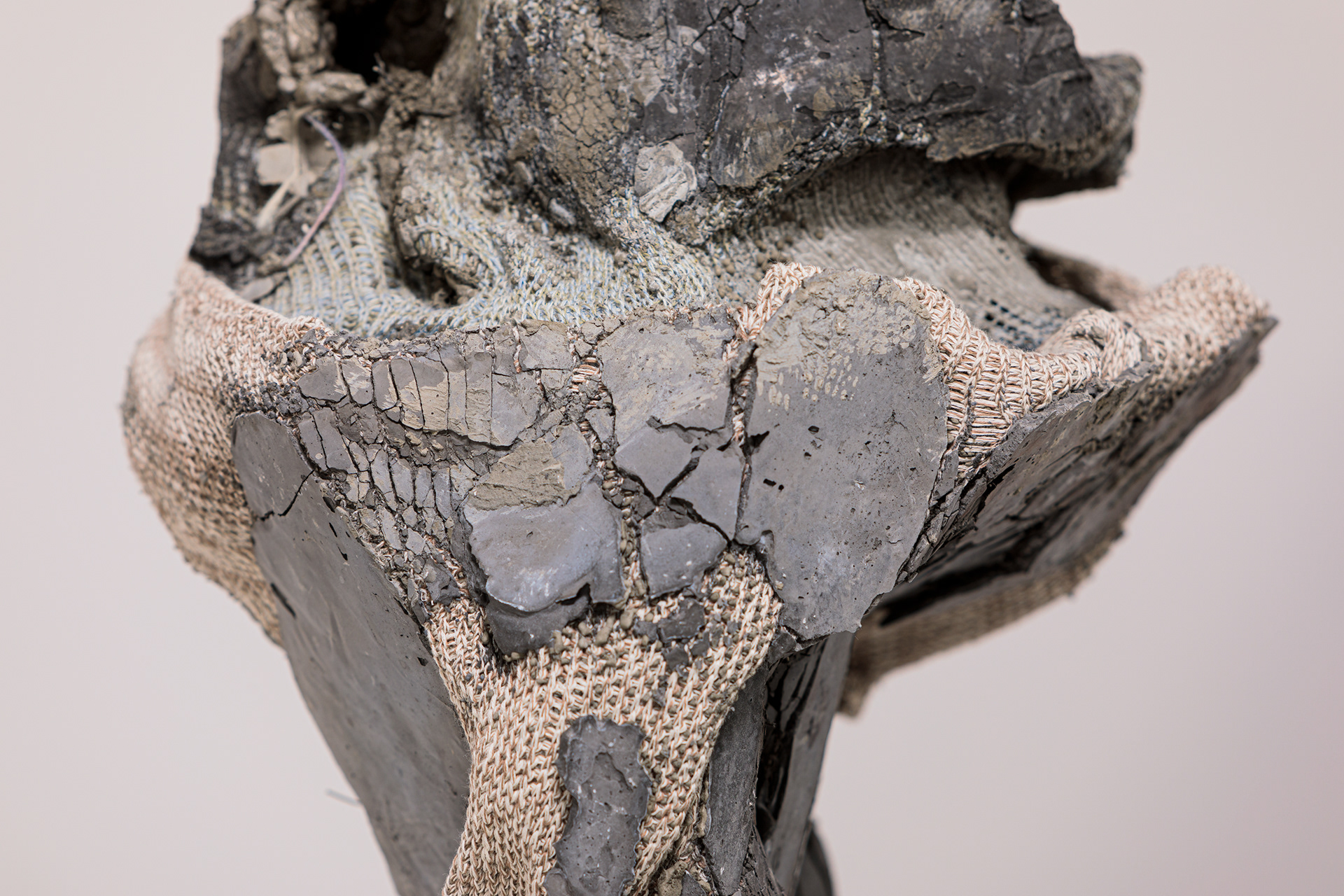
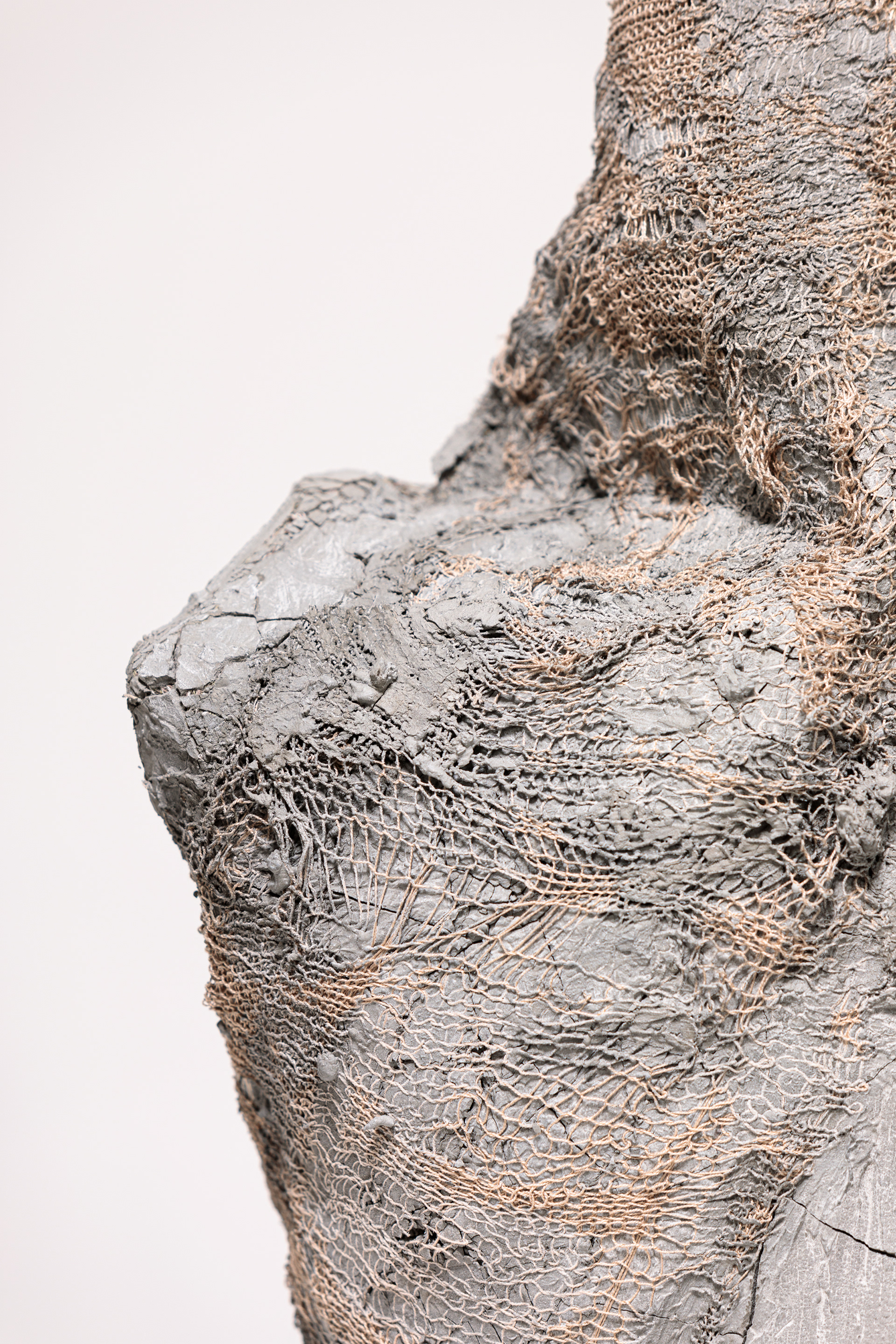
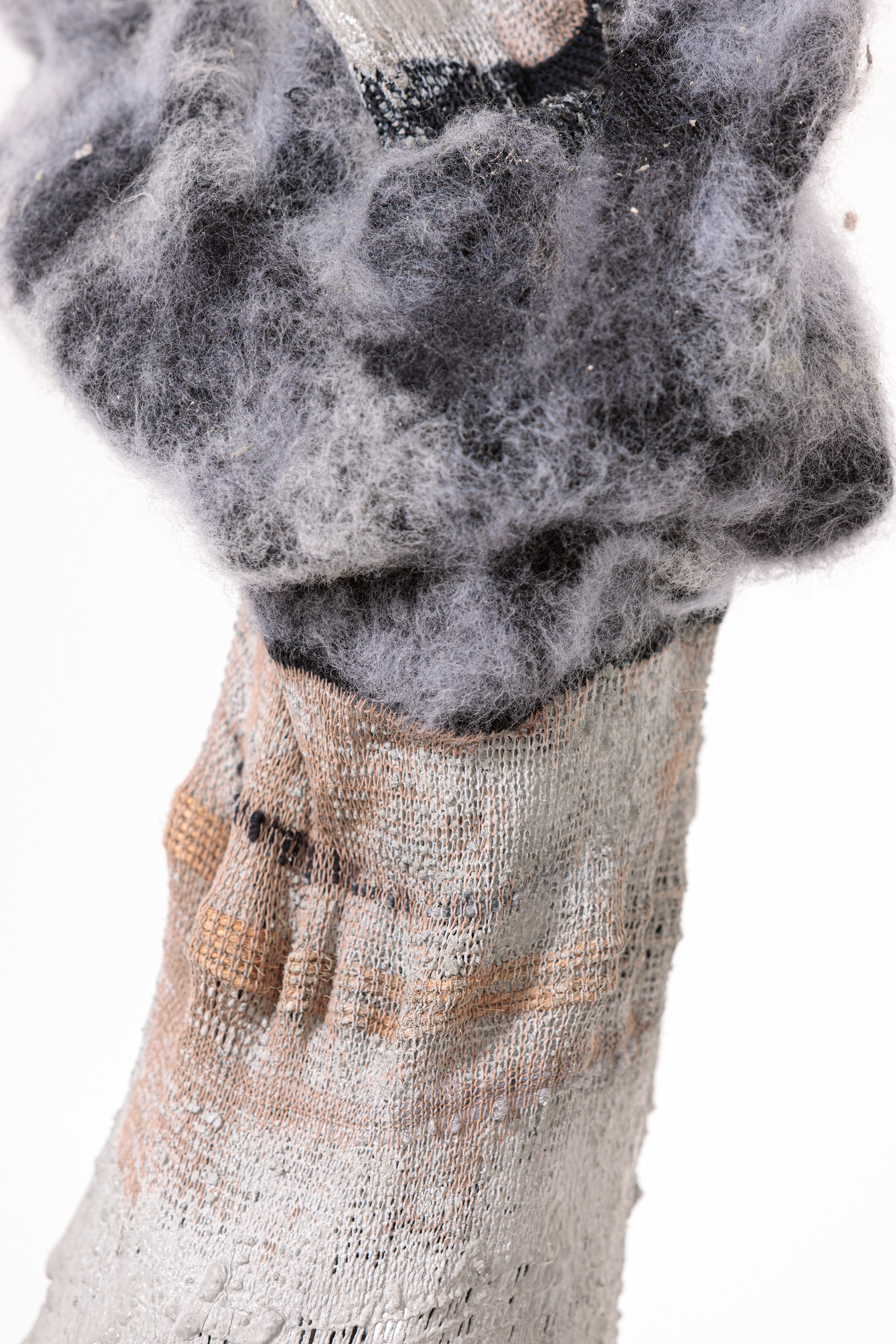
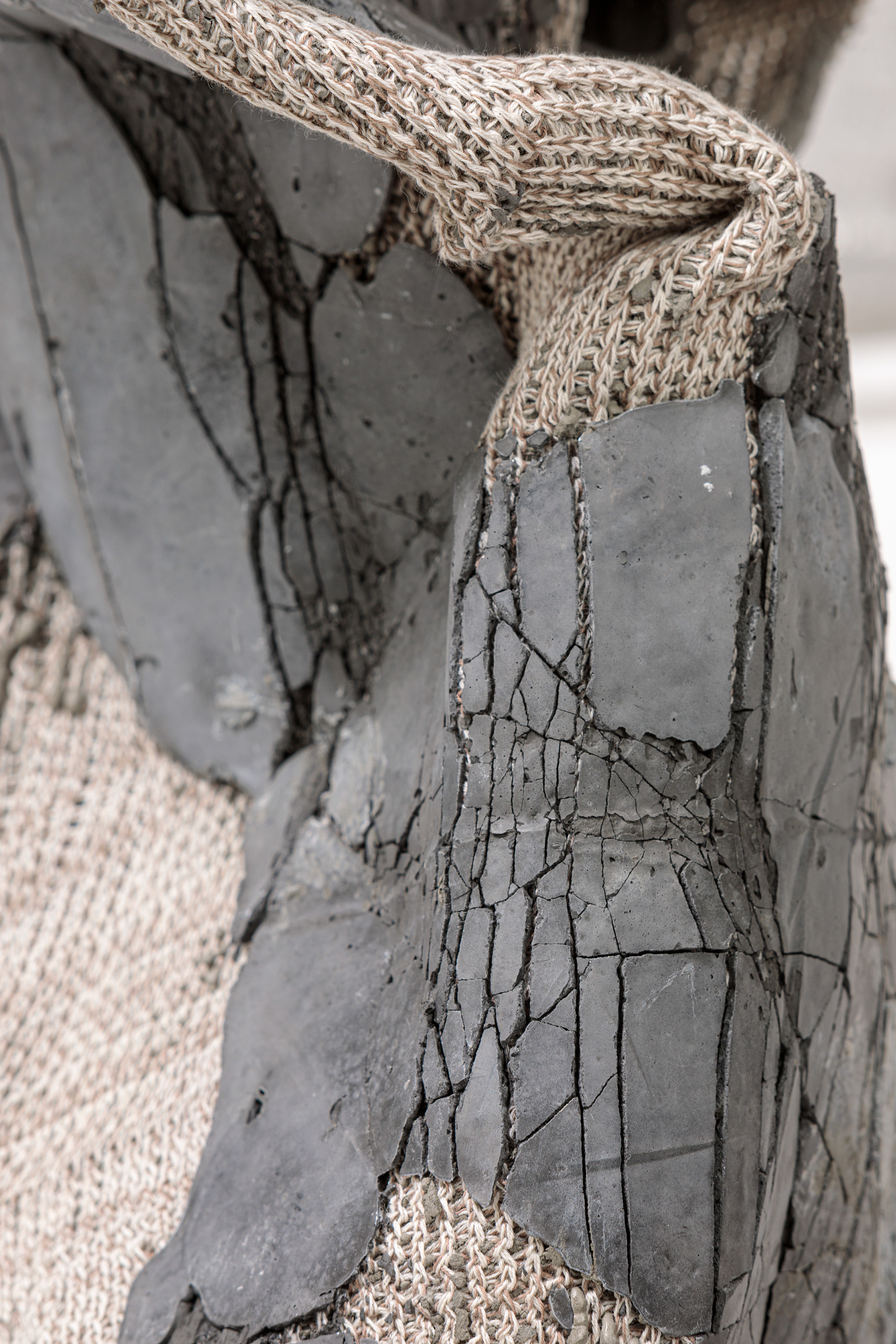

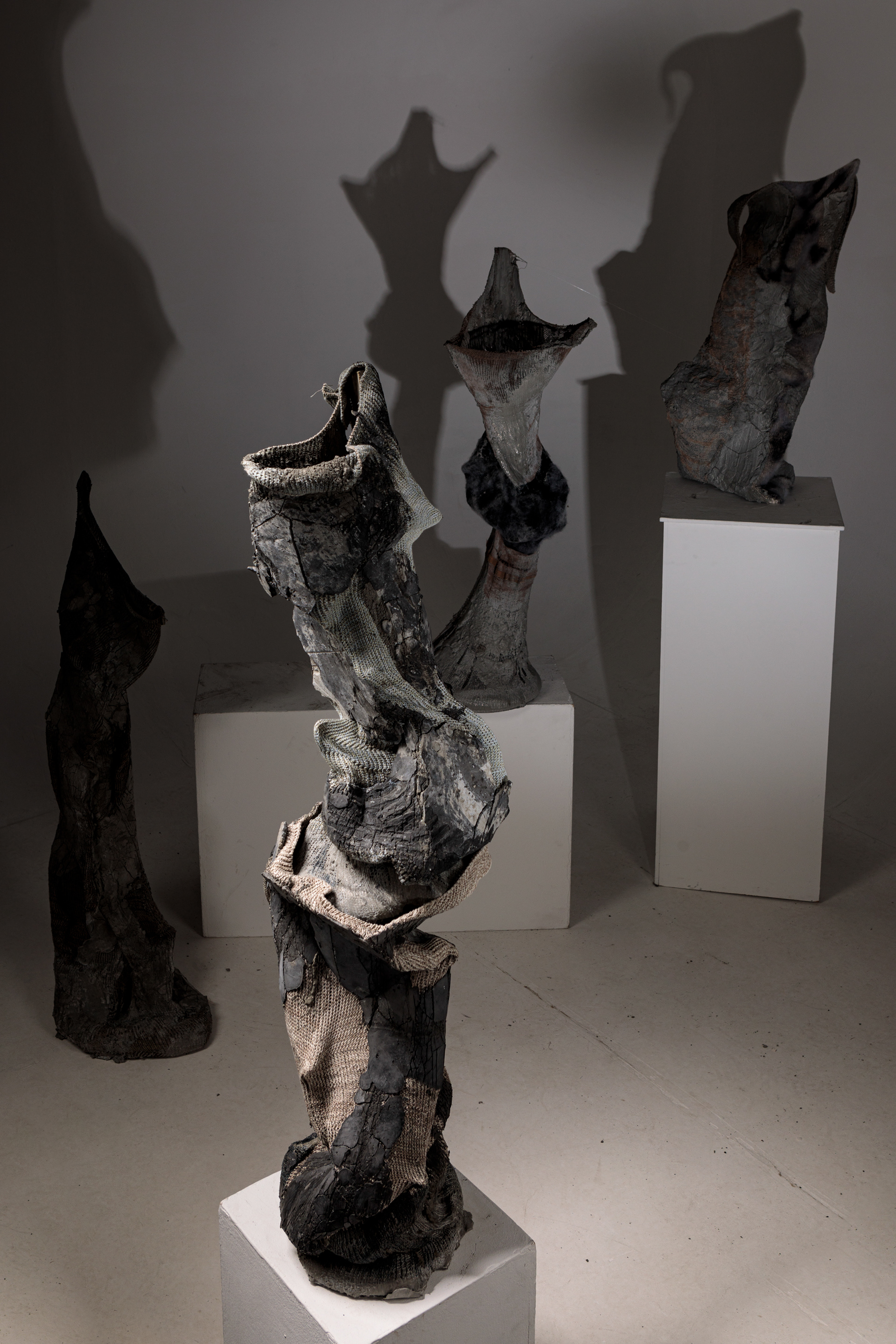
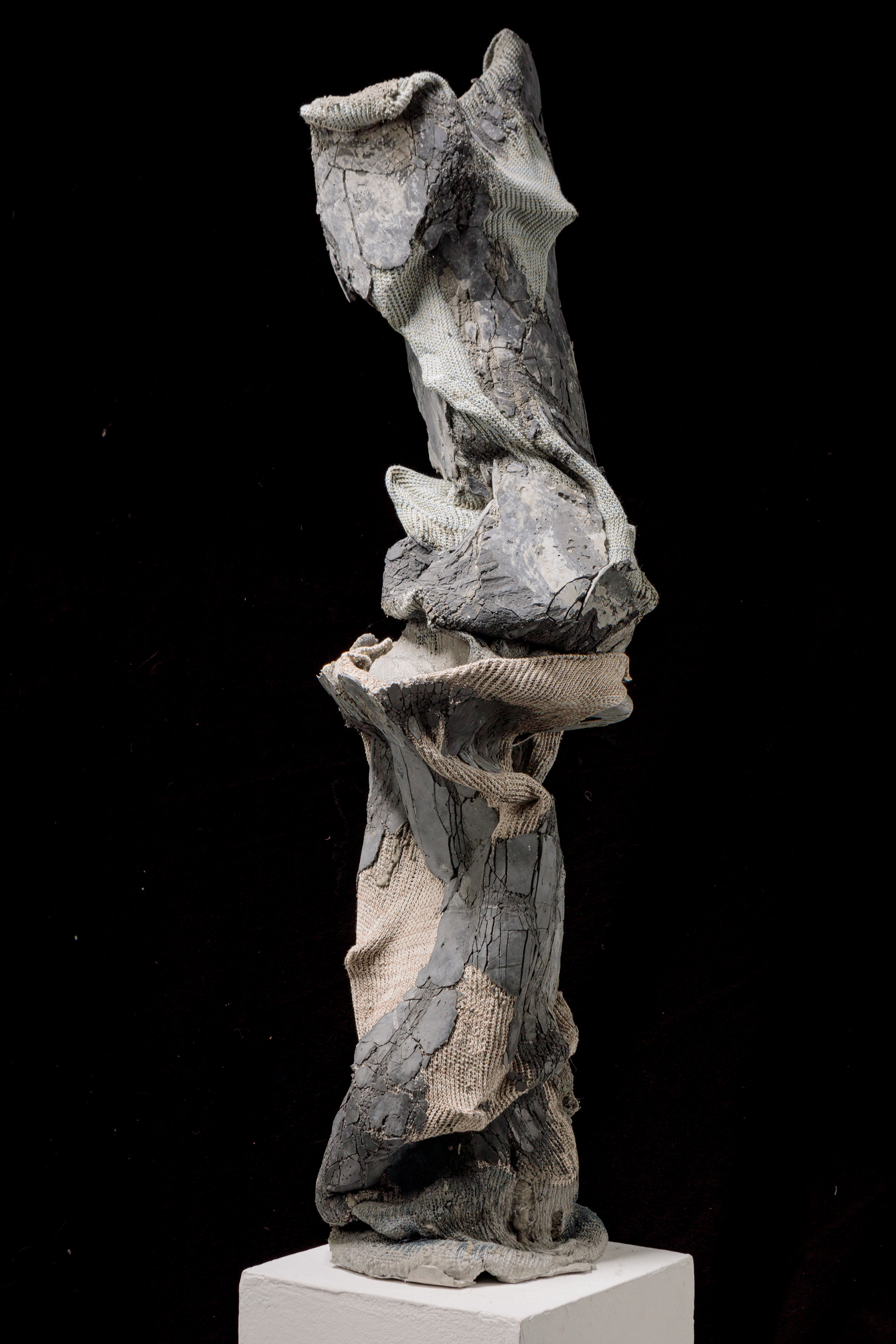
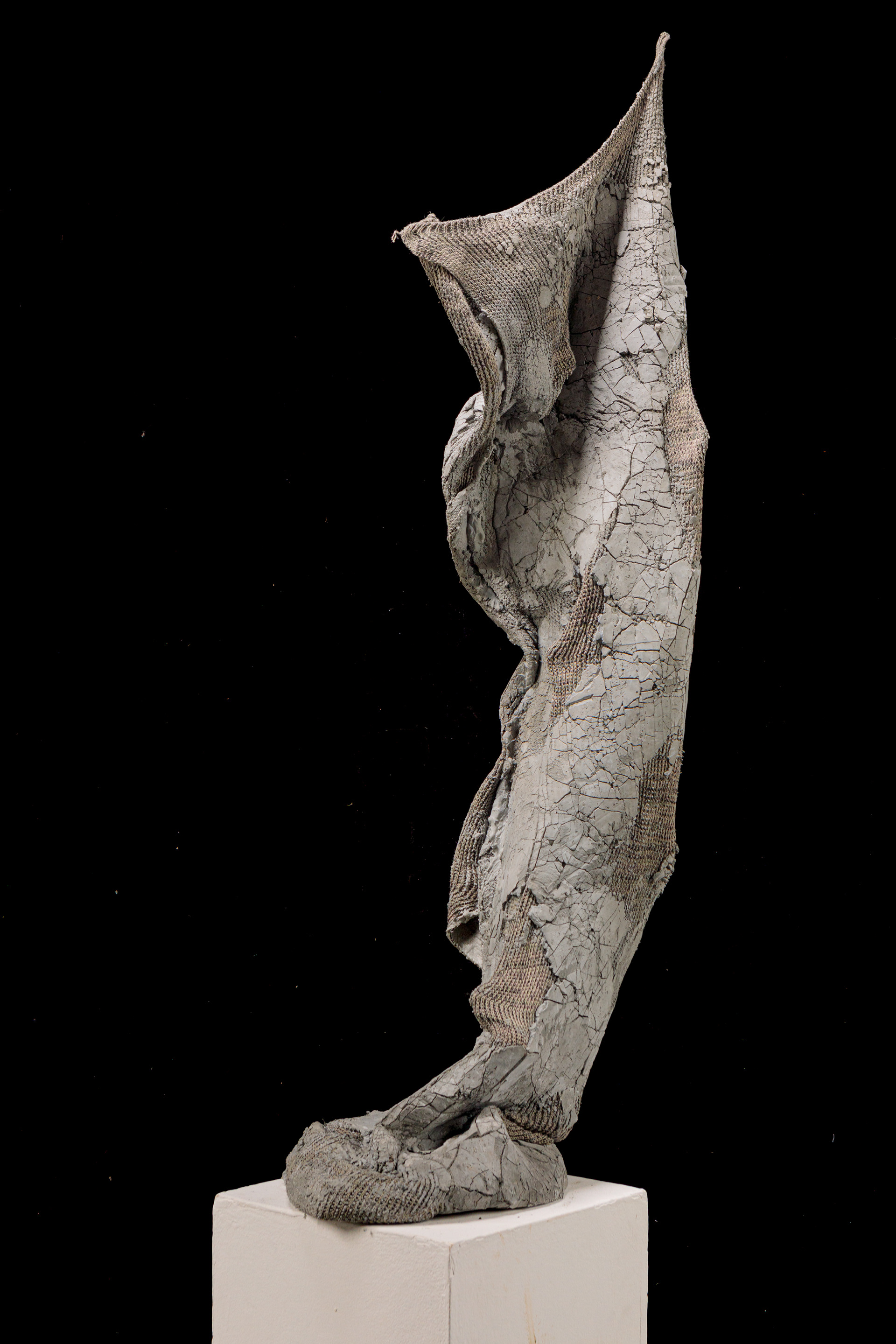
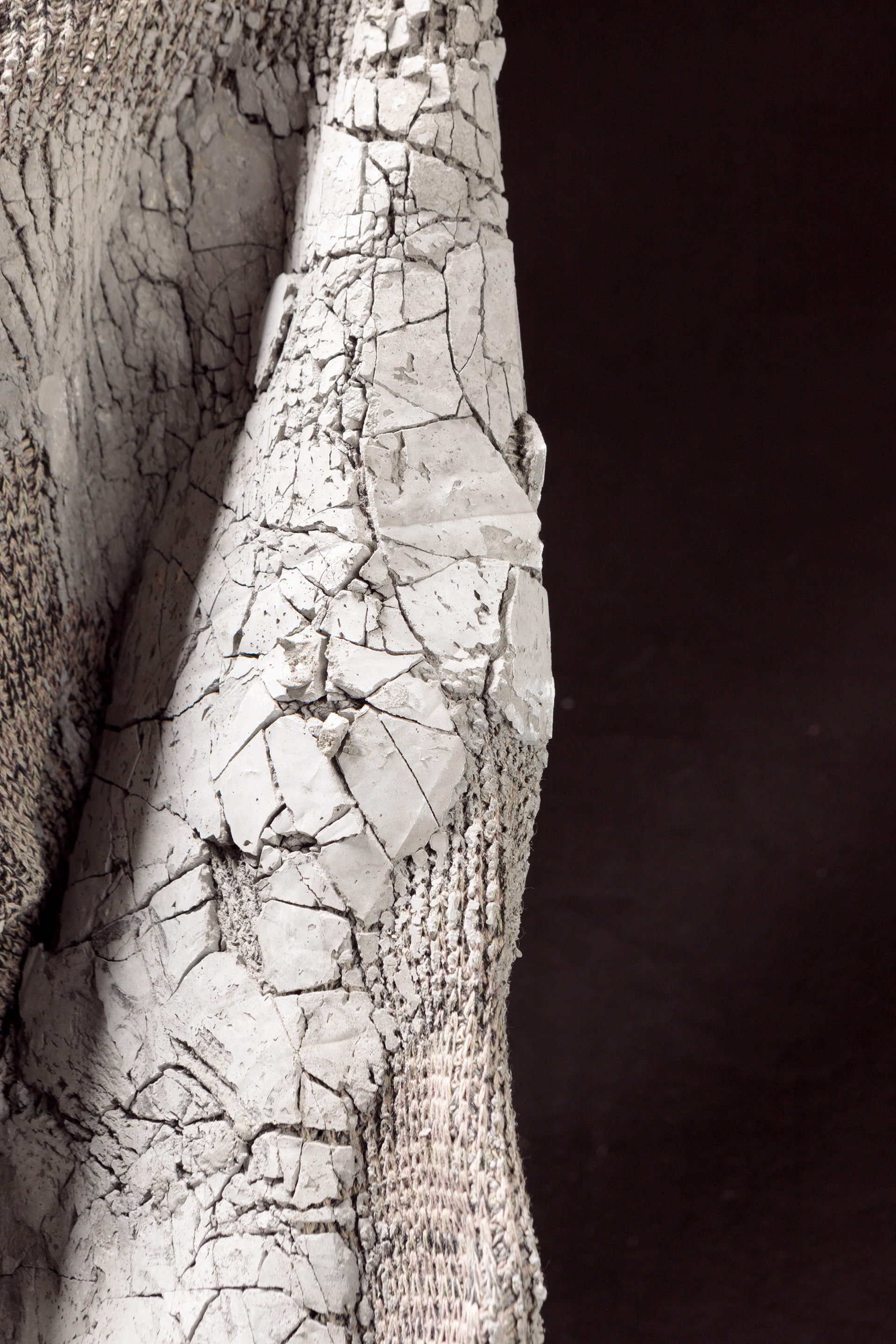
The feedback from my shoot was that having all the pieces on plinths made them look very stationary and more like ceramics than textile sculptures. So, I discovered how it felt to move with the pieces and considered best how to express the restrictive feeling of hostile architecture through them.
I played with bringing more tones and colour into the collect, whilst keeping the sense of hostility.
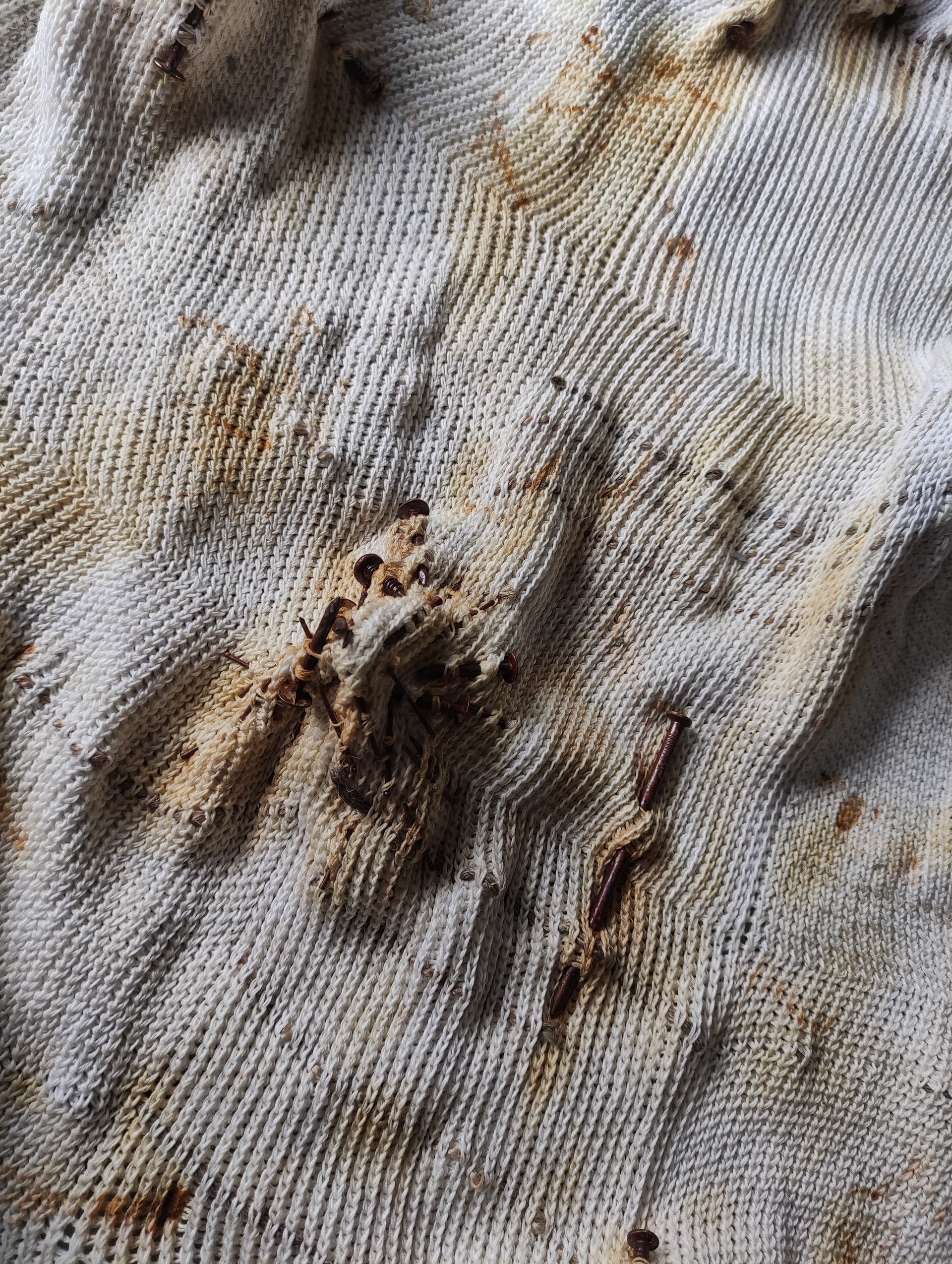
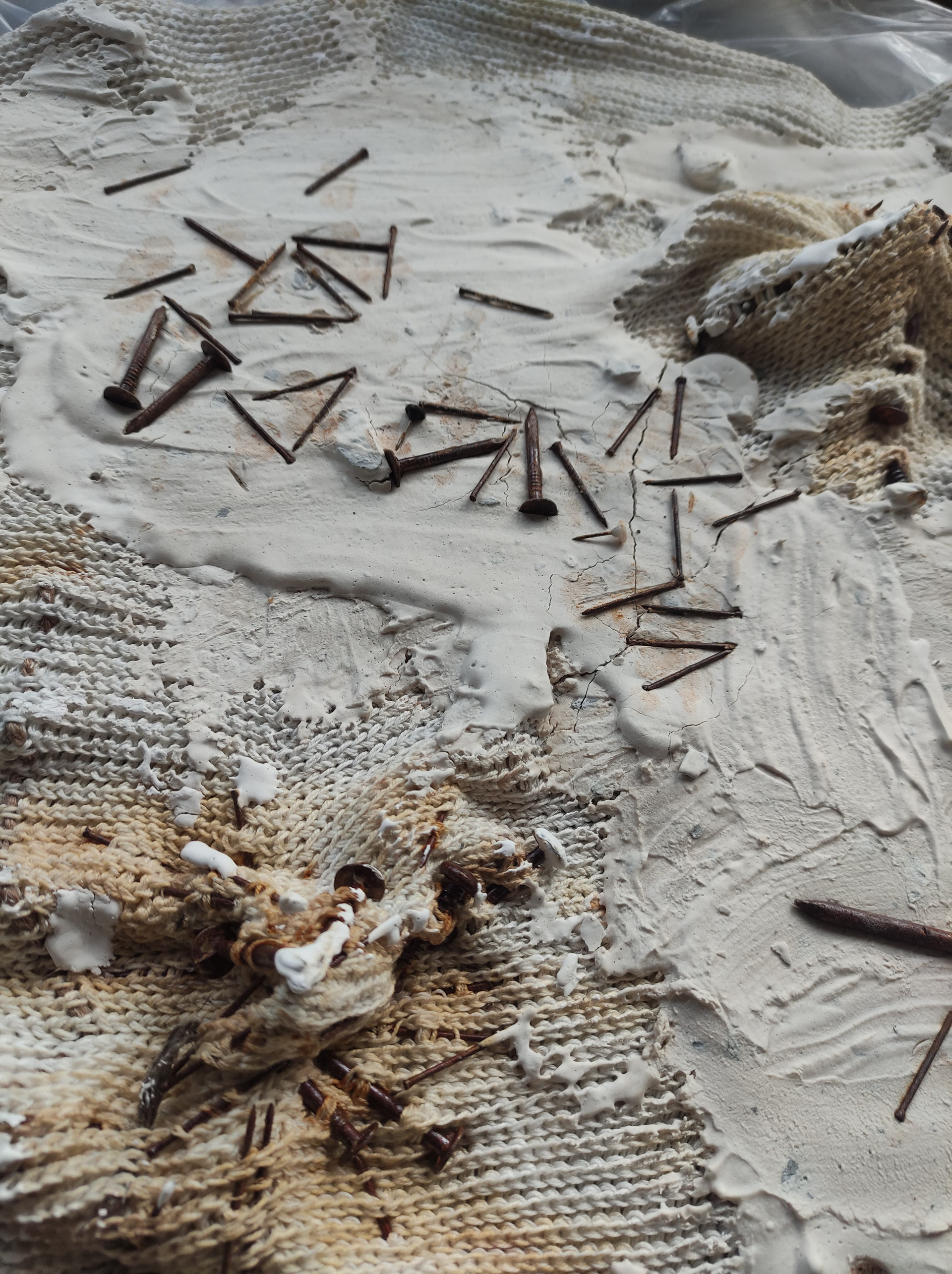
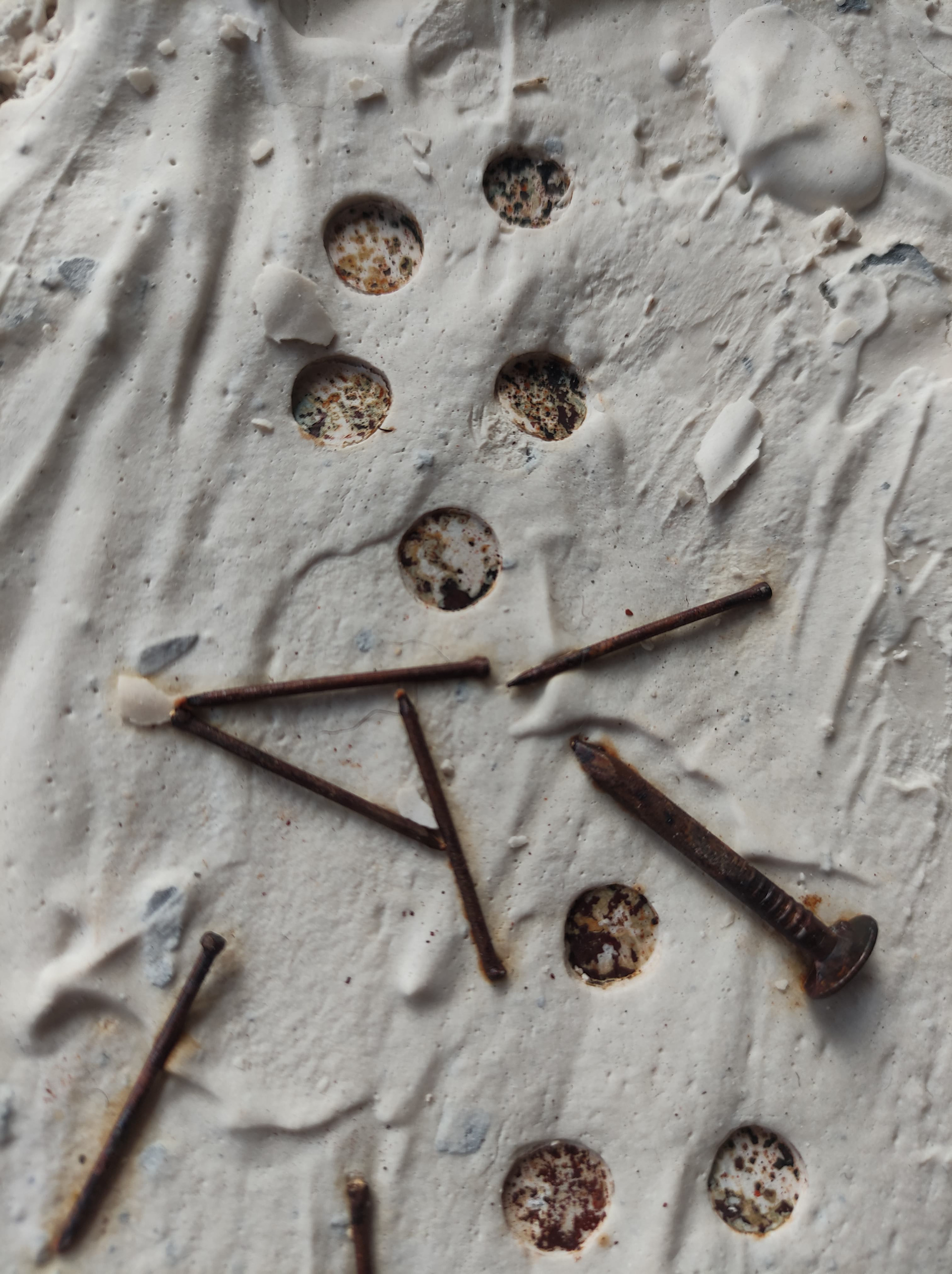
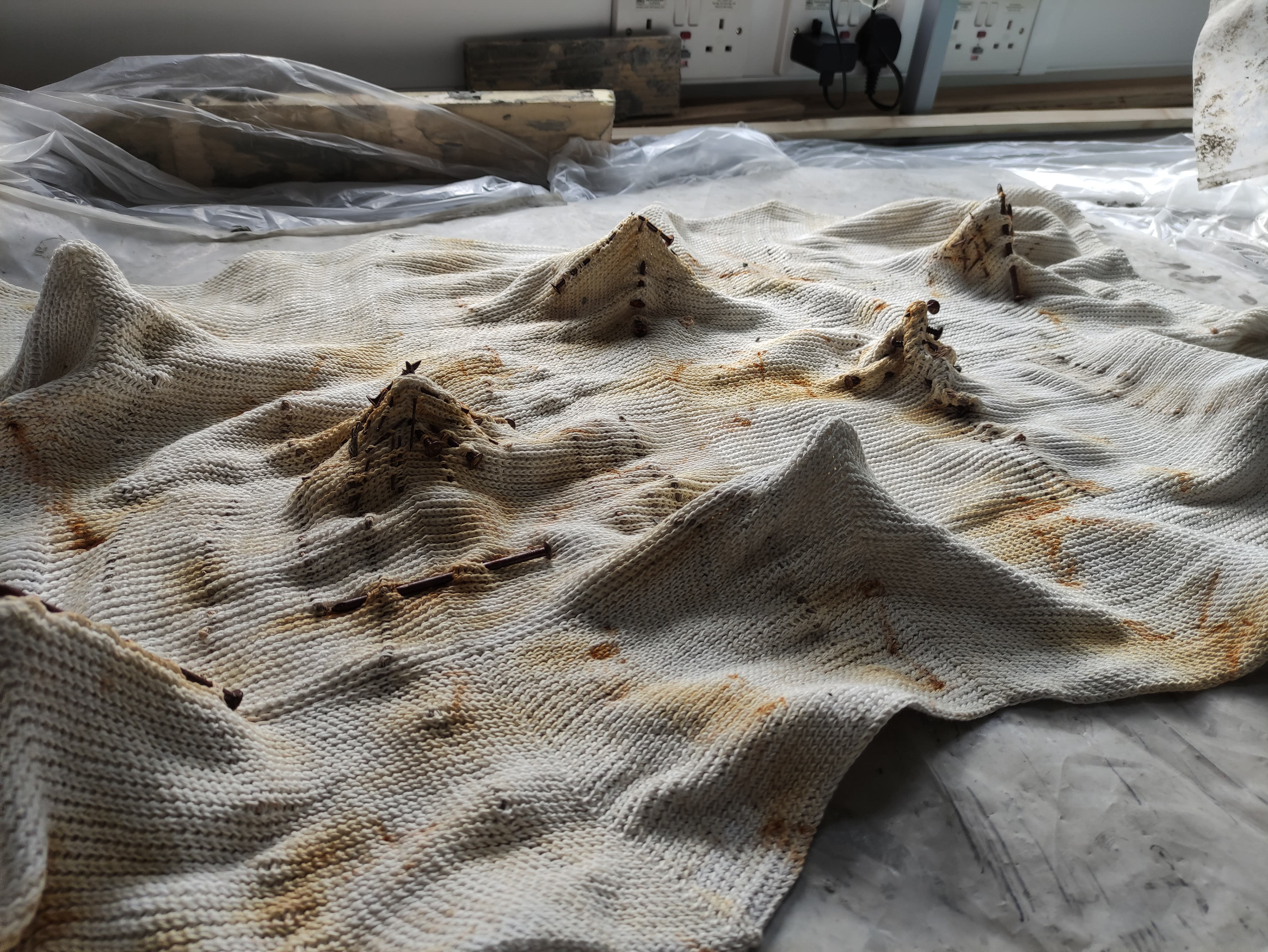
After thinking about movement and interacting with the pieces, I was inspired by Barbara Hepworth's sculptures where she creates voids of space within very solid objects, giving them a sense of fragility.
I also took inspiration from sculptor Henry Moore, whose abstract interpretation of form draws the viewer in and made me reflect that my sculpture would be enhanced by more variation in shape.
The silhouettes of my sculptures were taken from the postures of those forced to sleep uncomfortably on park benches where they cannot lie down due to hostile architecture.
final photoshoot
